Constructing the Engineers of the Future
Undergraduate Civil Engineers translate their knowledge into concrete and steel during Imperial’s ground-breaking Constructionarium course
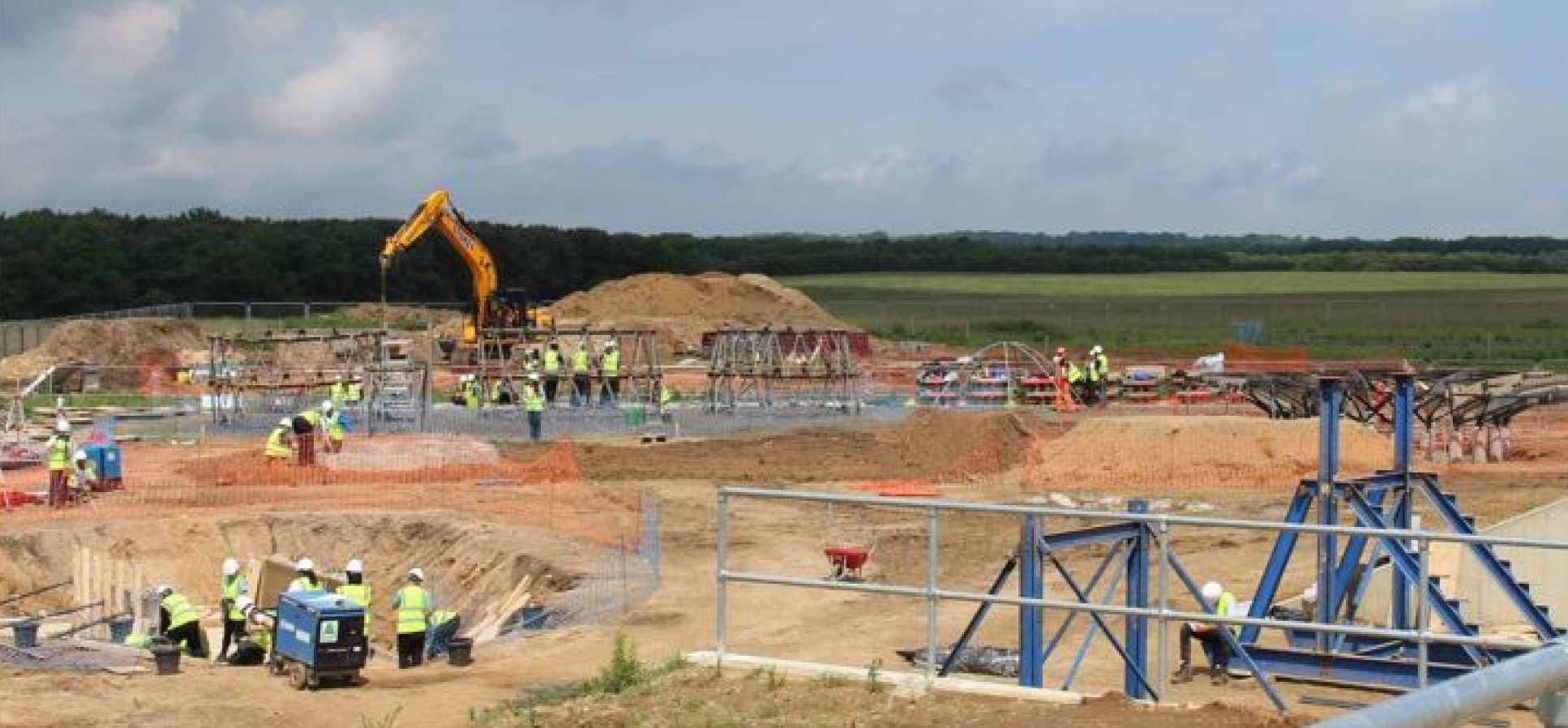
This summer, 84 second year undergraduate students made the journey to the National Construction College, in Bircham Newton in Norfolk, to take part in Imperial’s hugely successful Constructionarium module.
Pioneered by industry partners and Civil Engineering staff, Constructionarium is a radical design course, allowing students to manage and build real engineering projects at a bespoke construction site.
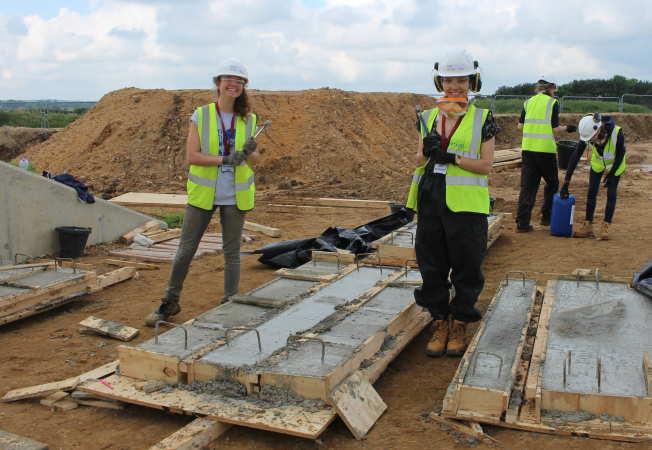
Currently in its 14thyear, this project has been adopted by over 20 UK universities, unrivalled due to its unique project-based learning. The Constructionarium module is designed to inform students about constructability, so that their own future designs are more realistic to construct.
Alison Ahearn, one of Constructionarium’s founders at Imperial said: “We have evolved from a classroom module, in which we asked students to make structural members out of rolled-up paper, into a multi-million pound outdoor learning environment with steel and concrete.”
With the support of Imperial staff, technicians and Graduate Teaching Assistants, four teams of 21 students were challenged to form their own construction companies and complete their project within a week, as well as manage their budget and materials. This year’s projects included scaled-down versions of Kingsgate Footbridge, the Gherkin skyscraper, Don Valley Stadium, and Ravenspurn Oil Rig.
Staff and GTAs from Imperial and our industry teaching partners celebrating the end of the week Over the years Constructionarium has strengthened relations between Imperial and industry partners. Students were joined on site by several senior members of staff from contracting and consultancy practices, including Graham Hardwick, Marquita Cox-Gardner and Hak Nazerali from Morrisroe, and James Parker from Expedition Engineering. Also on hand to impart their experience were Ben Godber, from Godber and Co., and volunteers from CH2M.
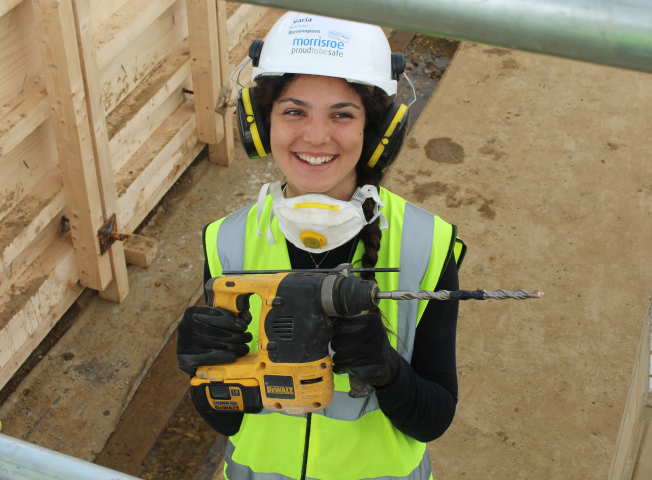
Whereas many of the students had never set foot on a working site before, they were now receiving health and safety, and power tool training from construction professionals, and coordinating and directing excavators, cranes, and concrete trucks.
Hak Nazerali, a Health and Safety Engineer from Morrisroe, said: “Constructionarium is a great transition from theory to a hands-on, practical-learning experience. It helps the students to really understand time-frames and the process behind all the planning in construction.”
The physical nature of Constructionarium was a new concept for many of the students, who discussed the challenges they had envisaged for the week.
Catherine Ding (Don Valley Team) said: “We have to pay high attention to detail now we are working with real 3D structures, and we find our priorities shifting towards logistics and health and safety. For example how are we going to lift the reinforcement bars to great heights? How are we going to fix the joints?”
“It’s been like nothing we’ve encountered before,” said Jean Marc Feghali (the Gherkin Team). “There are so many more things to think about when it’s real, particularly executing the project and keeping everyone safe on site. For example we will have to create massive weldings, but now we have to seriously consider the safety implications and act accordingly.
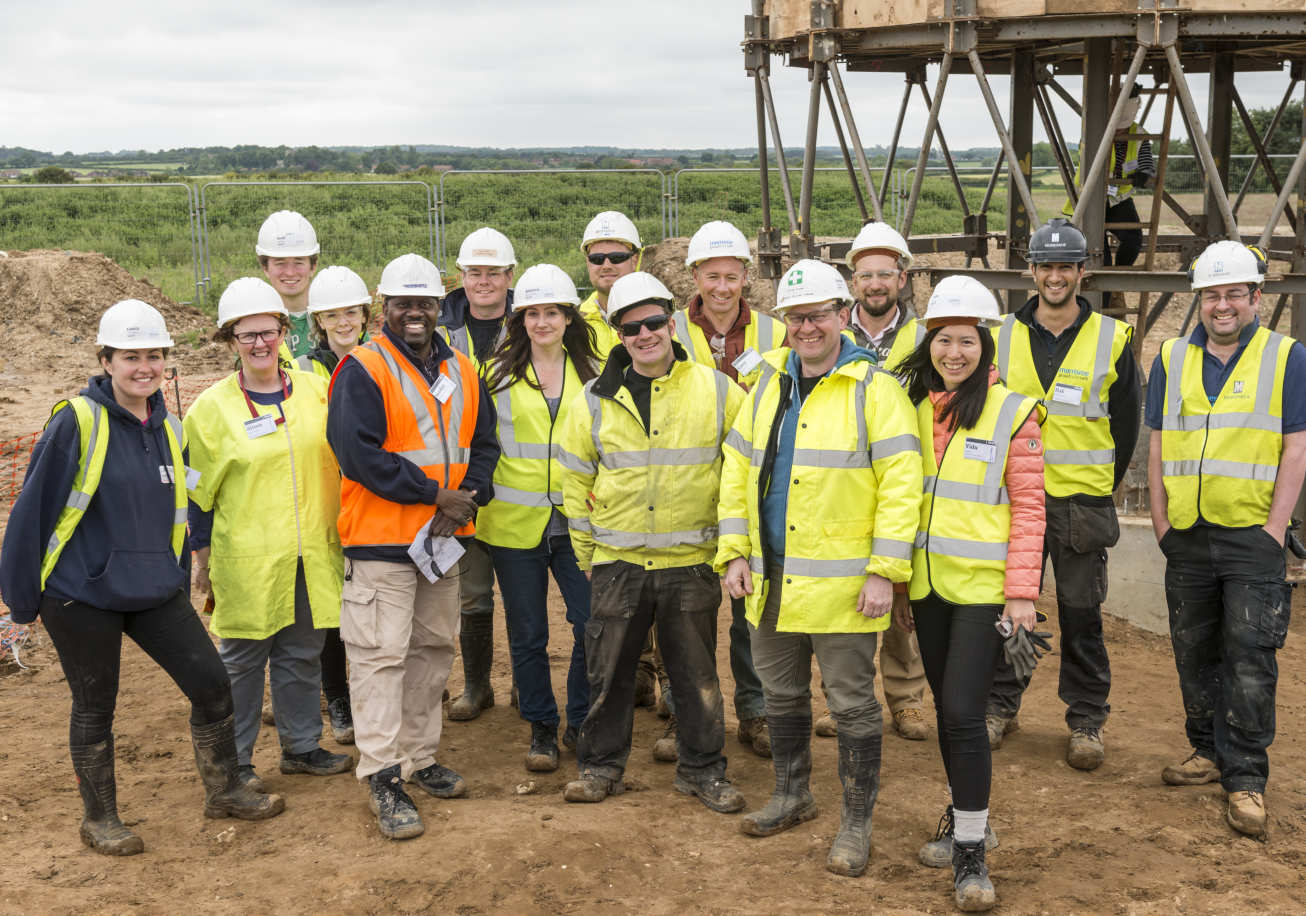
Stefan Algar, a technician in the Structures Laboratory at Imperial, said: “The students are in a very challenging situation, but they’ve had a great attitude towards their work throughout the week. As technicians, we’re here to bring a practical element, but the students have done all the thinking, all the learning, and all the doing.”
Hak Nazerali, from Morrisroe, added: “Everyone here deserves to feel a great sense of achievement. They’ve learned so many key skills, and they’ve improved hugely over the week. Their health and safety standards are phenomenal.”
“I never thought that contracting would be something I would be interested in, but this has been a once in a lifetime opportunity,” said Alice Jackson (the Gherkin). “I’ve had such a good time. The fact that you’re starting from scratch and you’re seeing all this being brought together, I can now truly understand why people would want to be a part of construction.”
Imperial’s Dr Sunday Popo-Ola summed up the experience, saying: “Constructionarium allows every student to taste the responsibilities of practical engineering, which converts students of engineering into student engineers. We are very proud of the success of this year’s students and of our teaching team. We could not do it without our industry partners.”
Click on the tabs to read more about the four projects
Don Valley Stadium
Don Valley was a sports stadium in Sheffield, UK, with a seating capacity of 25,000, before its demolition began in 2013. The Don Valley Constructionarium project requires students to build a section of the stadium, including underpass, seating and roof canopy.
Project Manager Frederick Lewis said: “We’ve identified areas which will need close attention. The steel stand is a very complex and heavy structure, so we have been working out steps to complete it safely, such as building it sideways to avoid working at height. Timing is also important, as we can’t put too much load on the concrete before it is strong enough. We have decided to leave the concrete for at least two days to reach a greater, more appropriate strength, before craning the steel stand to sit on top.”
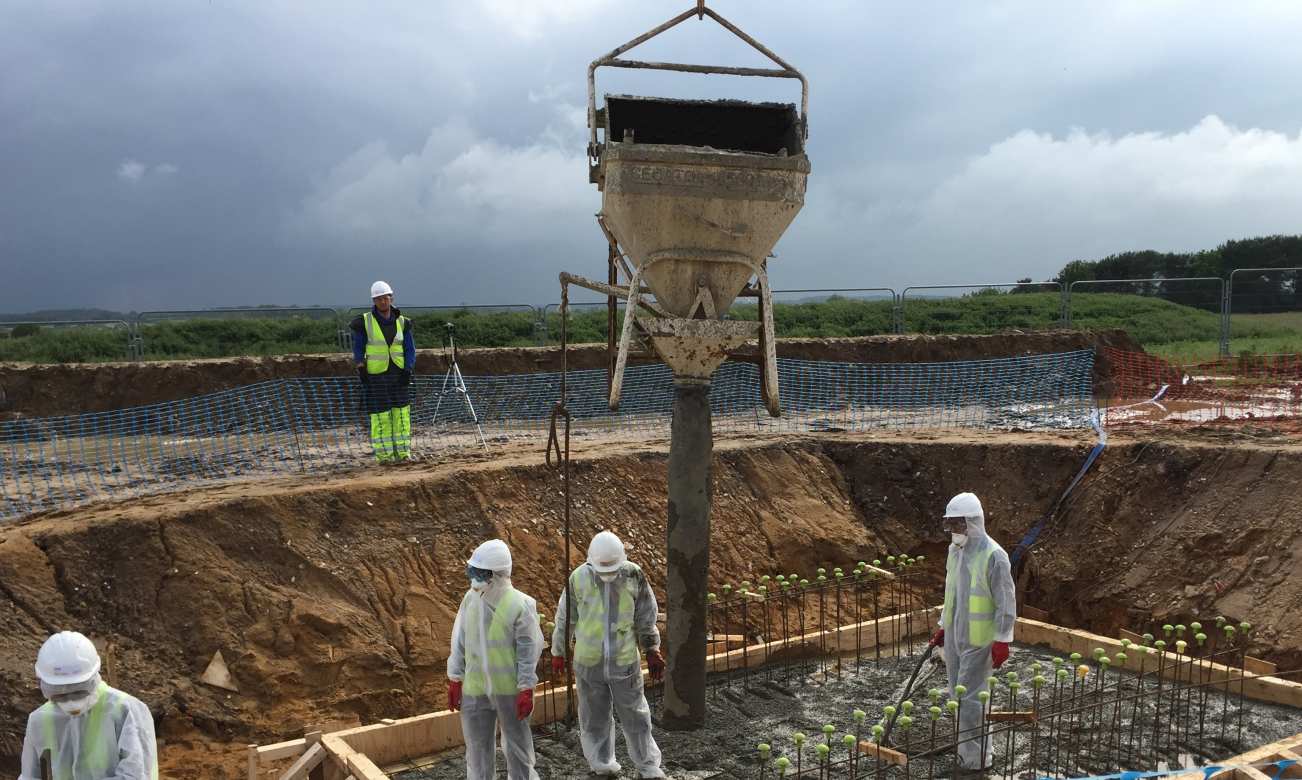
The students commissioned an excavator to dig out the 6 metre by 3.9 metre foundations, in which they installed steel reinforcement, and a concrete base and walls. At the same time, other members of the team were involved in the careful assemblage of the 6 metre-high steel superstructure, to be seated on top of the concrete retaining walls and bolted down on the final day.
When the structure was finally erected, the Morrisroe staff highly commended the team’s “fantastic health and safety logistics”.
“I have found Constructionarium to be a very dynamic environment. Every day there’s been a set target that we have to achieve to make sure the project is finished on time and on budget,” said Catherine Ding.
Two students of the Don Valley team managed to secure summer jobs with the on-site contractors, based on their remarkable performance during Constructionarium.
Kingsgate Footbridge
Kingsgate Footbridge is an elegant structure, which has connected Durham University to the town centre across a steep gorge since 1967.
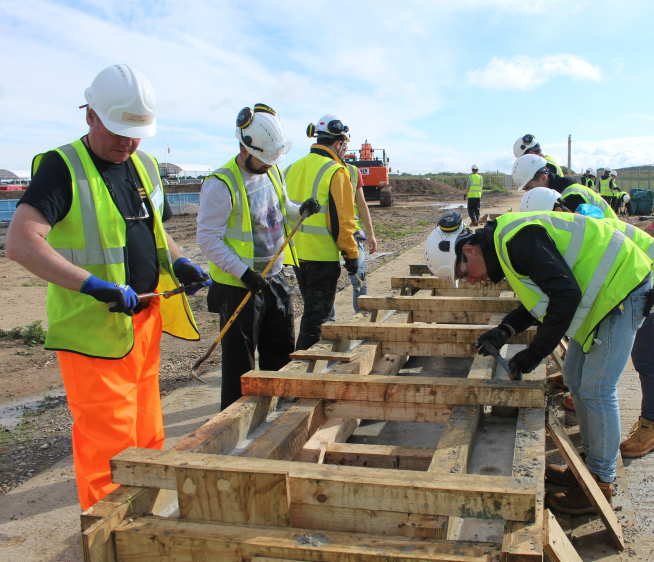
The students were tasked to replicate this footbridge with a scaled-down version, spanning 10 metres across a 0.75 metre-deep channel of water. The students built two bridge halves made from reinforced concrete U-shaped sections, and installed steel handrails. The bridge halves were to be lifted on top of two V piers, supported by rotating steel-plate bearings. Once the concrete bridge decks were secured to the V piers, they would be rotated to meet in the middle, and fully bolted into position.
Dimensional accuracy was key to the success of this structure, to avoid clashes or gaps between the two bridge sections once they were swung together.
“We built the two bridges halves separately, reusing the same formwork to cut down on costs,” said Charlotte Flower, the team’s Media Officer.
“We did have some issues fixing the bridge deck to the piers because we cast the concrete walls slightly too wide. We were thinking of solutions such as using wooden plates instead of metal, or cutting the metal plates in order for them to fit.”
Having built their structure on dry ground to avoid the health and safety issues of working close to or in the water, the team hired a crane to transport their completed bridge halves to the steel V piers on the final morning of Constructionarium.
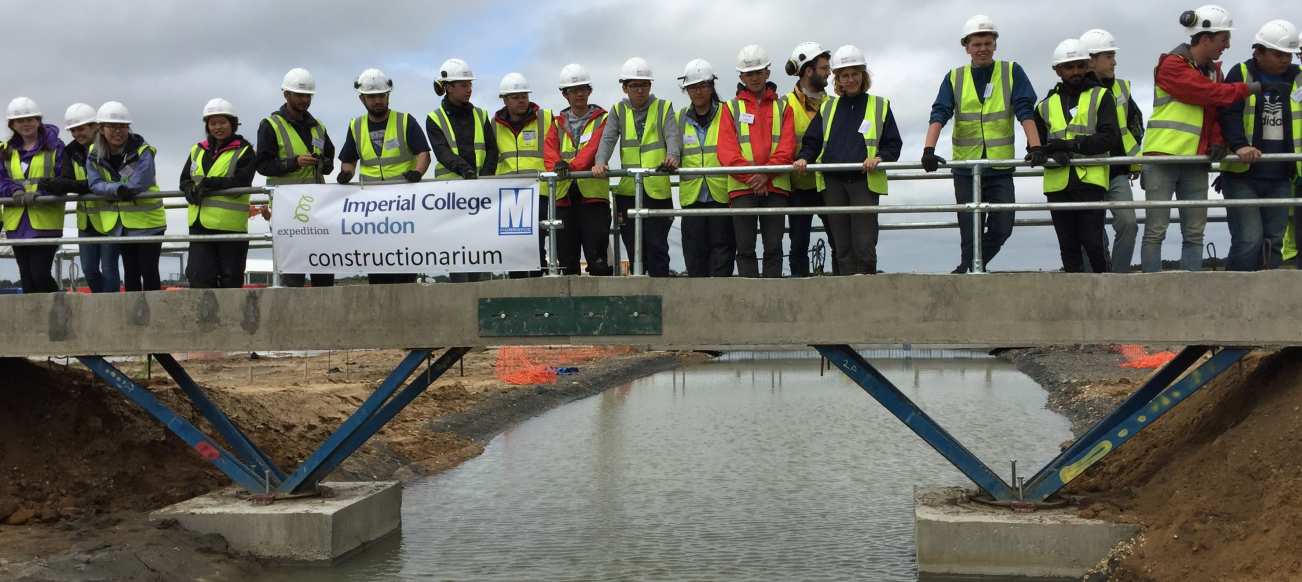
Standing on top of their completed bridge team member Lucy Wilkinson said: “Once we turned the bridge sections together we went up to measure the gap between them, but we couldn’t find one!”
“Although none of us have been on a construction site before, we’ve learnt really quickly, and the whole team has got stuck in,” added Charlotte.
Ravenspurn Oil Rig
Ravenspurn is a 28,000 tonne oil platform in the North Sea, installed 80km off Britain. Developed by Arup Energy in 1989, the rig has a unique design which allows it to have two decks, whereas previously only one has been possible.
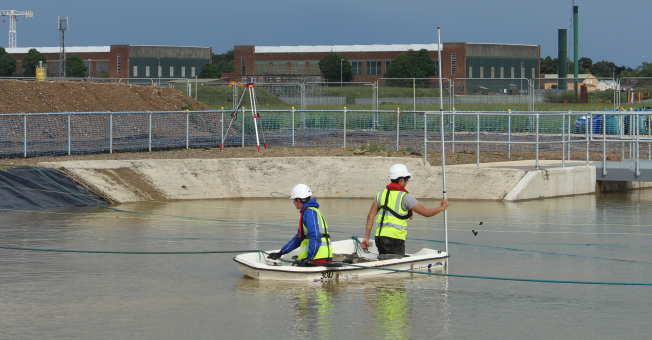
Made in a drydock separated from the lake by a dam, the Constructionarium students’ re-creation included a 4 metre square concrete base attached to a steel superstructure.
During construction some students would have to sail into the 2 metre-deep lake and level the designated sinking location with gravel. The final test of success was first to fill the drydock with water before the dam was opened, so that the structure could float from the drydock to the prepared sinking location.
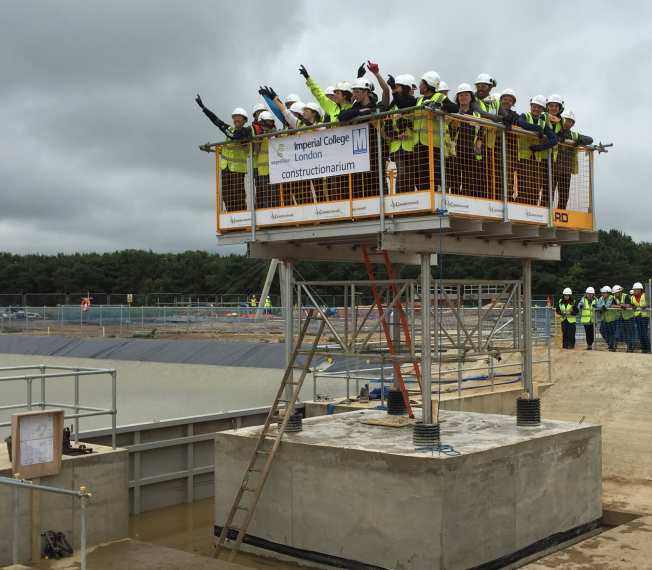
“We were casting the concrete for the base of the rig, which was going perfectly, but we then managed to pour too much concrete,” said the team’s Media Officer, Teddy Taleongpong. “Our Project Managers, Claudia Caravello and Christina Trigle, immediately set the whole team to work removing the excess concrete with buckets, which saved the project.”
On the final morning of the Constructionarium week the team successfully flooded the drydock, and towed the oil rig to the centre of the lake, where, after a tense wait, the structure sank into position.
“I have loved the hands-on experience of Constructionarium,” Teddy said. “It’s helped to confirm even more that I want to be in engineering, and that I want to be working on site with macro-projects.”
The Gherkin
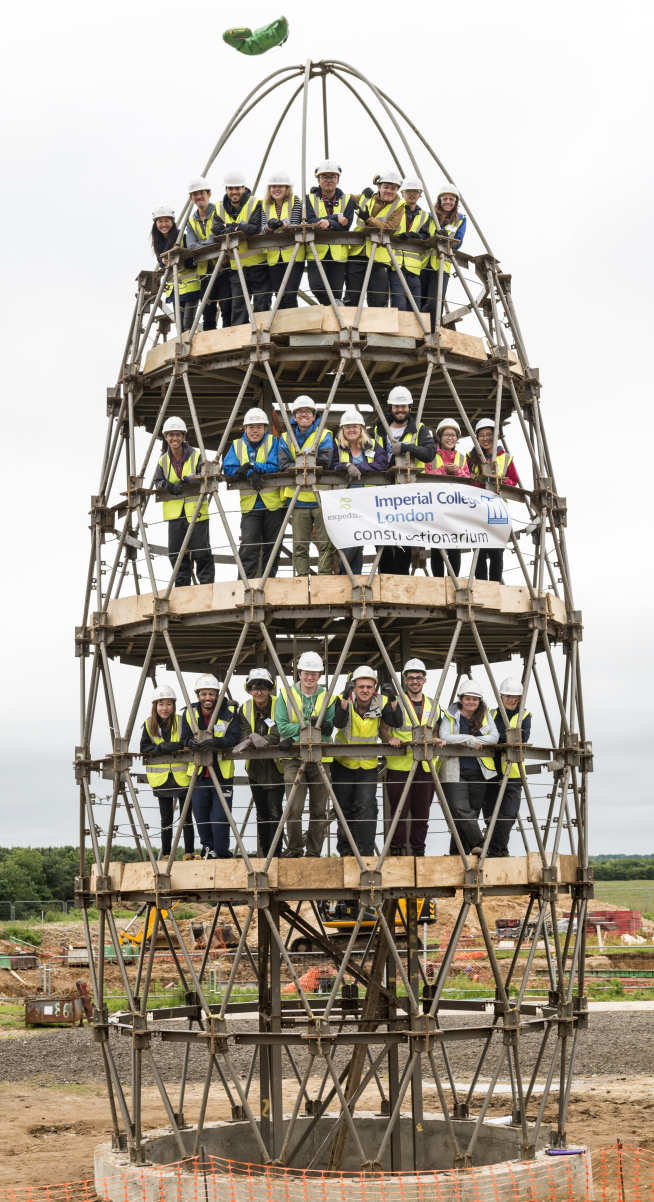
With 40 storeys, and spanning 180 metres into the sky, the Gherkin is one of the most recognisable skyscrapers in London. One team was challenged to build a 1 in 10 scale, four storey, 12 metre high replica of the tower, using prefabricated steel members connected in a diagrid form to a ringed concrete foundation. The students used over 1000 bolts to connect the steel shell-structure.
The team needed to perfect the calculations, surveying, and setting-out, or the building would be distorted.
Speaking on-site, Media Officer Alice Jackson said: “Fitting the curved timber formwork for the concrete ring foundation, and getting the steel reinforcement inside to fit was quite a challenge, so we had to place a lot of manpower on it to get it completed.”
The team impressed when their vibrating poker (used to compact wet concrete) broke down, forcing them to manually churn the concrete with sticks. When the formwork was removed there were only a few minor blemishes on the concrete’s surface. “The team’s concrete was of outstanding quality, considering they were unable to use a poker,” said Graham Hardwick, of Morrisroe.
The final tasks on Friday morning were to lift the preassembled steelwork on to the structure, using a 35-tonne crane, fit the floor slabs in at each level, and bolt them together.
Speaking from the summit of the completed Gherkin, Project Manager Azhar Ali said: “We may not be on top of a real skyscraper, but this is the highest we’ve ever felt. Would I do all this again? Every day!”


